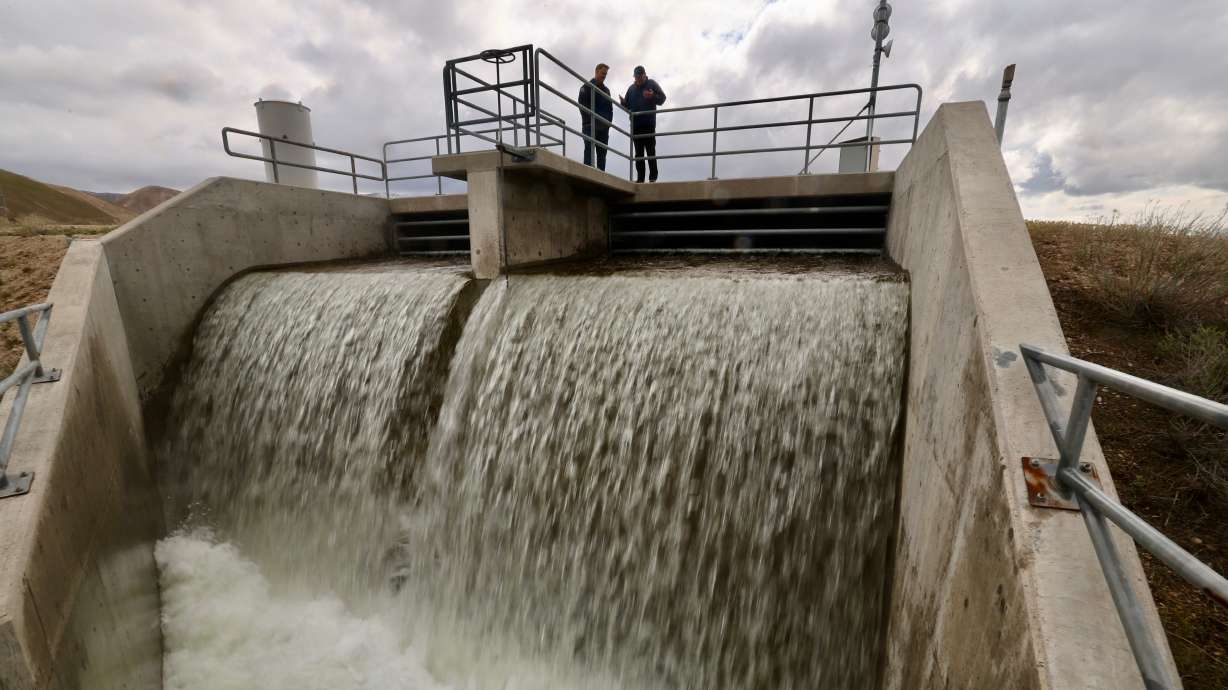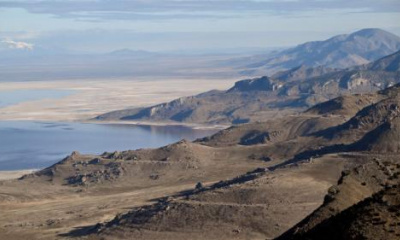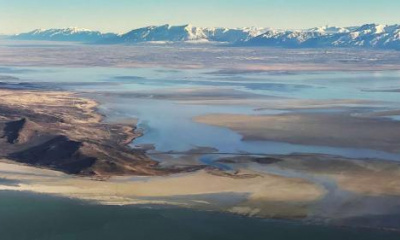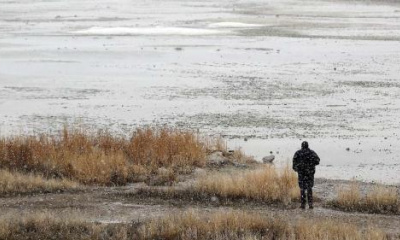DRAPER — Gene Shawcroft pulled a walkie-talkie up to his mouth and called for his employees to open a spill gate located near the Point of the Mountain.
"We'll get it going as fast as we can," one of the workers replied back.
A minute or two later, Shawcroft, the general manager of the Central Utah Water Conservancy District, and others applauded as the gates opened and water began to shoot out of the large concrete structure into a 10-foot man-made waterfall in front of them that flows directly into a nearby culvert. The district plans to send about 50 million gallons of water from this site every day for the next little while, all of which should eventually end up in the Great Salt Lake.
Tuesday's event comes as the Provo-Utah-Lake-Jordan snowpack basin continues to retain most of the snow that has built up since October. Per Natural Resources Conservation Service data, there are still 37.8 inches of snow water equivalent left in the basin, 2.3 below this year's record peak but 3.4 inches above the previous record set in 2011.
With temperatures slowly warming up this spring, Shawcroft says the real snowmelt process is expected in the "very near future." The point of this runoff is to avoid severe flooding from the impending snowmelt; however, it's a perfect way to send all the excess water into the struggling Great Salt Lake, too.
"We've got a lot of water to come down," he said.
Jeff Budge, the operations and engineering manager for the Provo River Water Users Association, explained that water coming from the Provo River is being diverted to the spill gates at the Point of the Mountain. This water ends up in the Jordan River, a tributary of the Great Salt Lake.
The water that the district is sending to the lake is enough to fill 100 Olympic-sized swimming pools or 150 homes for a year, Shawcroft said. He adds the releases will continue daily until the snowmelt begins to slow down and flood concerns peak in the area.
The plan is similar to Salt Lake City Public Utilities' decision earlier this year to release water from two reservoirs in Parleys Canyon. Department officials said they began to release extra water from the reservoirs when it became clear that there was more snow in the snowpack than the reservoirs had the capacity to collect.
It just so happens that both districts' flood control measures can benefit the struggling Great Salt Lake.
The Great Salt Lake's water levels reached an all-time low for the second-straight year in 2022 but it has received a significant boost with this year's record-breaking winter. The U.S. Geological Survey reports that levels at the Saltair Boat Harbor are back up to 4192.4 feet elevation, more than 3½ feet above the record-low readings in November.
"This infrastructure ... wasn't built to send water to the Great Salt Lake. It was built to send water to homes and farms and irrigation ground. But here we are finding a way to send it directly to the Great Salt Lake, said Utah Utah House Majority Leader Mike Schultz, R-Hooper, attending Tuesday's event. "This didn't have to happen today. These guys took it upon themselves (and) decided to work together to figure out a way to send water to the Great Salt Lake."
More water is expected from beyond just when flows in from the Jordan River. The Bear, Ogden and Weber rivers are all projected to have flows that are between 240% and 260% of average. However, consumption will dictate how much of that ends up in the Great Salt Lake, especially once the irrigation season is in full swing.
Utah leaders and water experts alike say this winter, while tremendous for the state's ongoing drought situation and the Great Salt Lake, doesn't guarantee that next year's winter will be as beneficial. The lake also remains about 5.6 feet elevation below its minimum healthy level.
It's why Schultz says Utahns should continue to "come together" and find ways to reduce water consumption.
"It's going to take more in the future from everybody," he said. "We're going to have to figure out other ideas and solutions on how we can solve this problem. ... We're going to figure out ways to come together that will benefit our kids and grandkids in the future."








